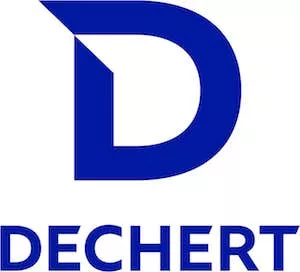- within Antitrust/Competition Law, Consumer Protection and Tax topic(s)
- with readers working within the Banking & Credit industries
Key Takeaways
- For a decade, SEC rules have permitted general solicitation in private offerings. However, this flexibility has been underutilized as a result of restrictive SEC guidance on verifying accredited investor status.
- New SEC staff guidance clarifies that a high investment minimum, together with investor representations, can constitute "reasonable steps to verify" a purchaser's accredited investor status, a condition of offerings made in reliance on Rule 506(c) of Regulation D.
- To take advantage of the new guidance, a purchaser must agree to a minimum investment amount ($200,000 for natural persons or $1,000,000 for legal entities) and make written representations (1) regarding its accredited investor status and (2) that its investment is not third-party financed. The issuer additionally must not have actual knowledge that the purchaser's representations are false.
- This new verification method has the potential to significantly simplify reliance on Rule 506(c) and expand the use of general solicitation in the private capital fundraising markets.
Summary
The staff of the SEC's Division of Corporation Finance ("Staff") issued a no-action letter and updated its Compliance & Disclosure Interpretations on March 12, 2025, to clarify the circumstances in which a high investment minimum can be a factor in determining whether an issuer has taken reasonable steps to verify a purchaser's accredited investor status in offerings made under Rule 506(c).1
The Staff agreed that an issuer can reasonably conclude that it has taken reasonable steps to verify a purchaser's accredited investor status in an offering conducted under Rule 506(c) of Regulation D if the following requirements are met (the "Minimum Investment Method"):
- each purchaser agrees to a minimum investment amount of at least $200,000 for natural persons or $1,000,000 for legal entities2 ("Minimum Investment");
- each purchaser makes written representations regarding its status as an accredited investor and that its Minimum Investment is not financed in whole or in part by a third party for the purpose of making such Minimum Investment3 (items (1) and (2) together, the "Representations"); and
- the issuer has no actual knowledge of any facts that indicate that the purchaser's Representations are false.
The Staff provided alternative conditions for a purchaser that is an accredited investor solely because of the accredited investor status of each of its equity owners. These arrangements are addressed in Rule 501(a)(8) of Regulation D. In these cases, an issuer must obtain written representations from the purchaser that:
- Each of the purchaser's equity owners has a Minimum Investment obligation to the purchaser of at least $200,000 for natural persons and $1,000,000 for legal entities.
- The Minimum Investment amount of the purchaser, and the Minimum Investment amount of each of the purchaser's equity owners, is not financed in whole or in part by any third party for the specific purpose of making the particular investment in the issuer.
Such purchasers must agree to make a Minimum Investment of at least $1,000,000, or $200,000 for each of the purchaser's equity owners if the purchaser's only equity owners consist of fewer than five natural persons.
Discussion
In connection with the JOBS Act of 2012, the SEC adopted Rule 506(c) under the Securities Act.4 The rule permits the use of general solicitation in a Rule 506 offering if all of the purchasers are accredited investors and if the issuer takes "reasonable steps to verify" the accredited investor status of the purchasers.
Currently, Rule 506(c)(2)(ii) provides four examples of "non-exclusive and non-mandatory verification methods" ("Verification Methods") an issuer may rely on to satisfy the requirement to take reasonable steps to verify a purchaser's status as an accredited investor.5
- Income. An issuer may review copies of any Internal Revenue Service form reporting the purchaser's income for the two most recent years.6 The issuer must also obtain a written representation from such person that he or she has a reasonable expectation of reaching the income level necessary to qualify as an accredited investor during the current year.
- Net Worth. An issuer may review various types of documentation relating to the purchaser's net worth,7 and to evidence liabilities may review a consumer/credit report from at least one nationwide consumer reporting agency and obtain a written representation from the purchaser that all liabilities necessary to make a determination of net worth have been disclosed.8
- Third Party Confirmation. An issuer may obtain written confirmation from a registered broker-dealer, an SEC-registered investment adviser, a licensed attorney or a certified public accountant that such third party has, within the prior three months, taken reasonable steps to verify that the purchaser is an accredited investor and has determined that such purchaser is an accredited investor.
- Prior Investors. With respect to any purchaser that an issuer previously took reasonable steps to verify as an accredited investor in accordance with Rule 506(c)(2)(ii), so long as the issuer is not aware of information to the contrary, an issuer may obtain a written representation from such purchaser at the time of sale that he or she continues to qualify as an accredited investor.9 A written representation under this method of verification will satisfy the issuer's obligation to verify the person's accredited investor status for a period of five years from the date the person was previously verified as an accredited investor.
In the Adopting Release, the SEC had stated that, in addition to the Verification Methods, issuers "can apply the reasonableness standard directly to the specific facts and circumstances presented by the offering and the investors." In particular, the SEC indicated that a purchaser's "minimum investment amount" is an appropriate factor that issuers may consider "when determining the reasonableness of the steps to verify" a purchaser's accredited investor status.10
In line with its position in the Adopting Release, the Letter confirms the Staff's view that an issuer in a Rule 506(c) offering will have taken reasonable steps to verify a purchaser's accredited investor status by satisfying the conditions described above. Accordingly, the Minimum Investment Method may be considered a fifth (and, in many cases, more viable) Verification Method for fund sponsors and other market participants.
Practical Considerations
In the nearly 12 years since Rule 506(c) was adopted, many issuers have been reluctant to take advantage of the opportunity to engage in general solicitation under a Rule 506(c) offering because the Verification Methods were generally viewed as cumbersome for issuers and invasive for investors.
The Staff's guidance that the Minimum Investment Method is another possible method an issuer may use to satisfy the requirement to take "reasonable steps" to verify a purchaser's status as an accredited investor for purposes of a Rule 506(c) offering is a significant development that has the potential to benefit participants in the private capital fundraising markets.
Even those issuers not initially intending to rely on Rule 506(c) may consider making a Rule 506(c) offering based on the practicability of this clarified interpretation. For example, preserving the ability to rely on Rule 506(c) may afford sponsors more flexibility to discuss current fund offerings especially when they typically offer institutional funds with investment minimums well in excess of those discussed in the Letter.
For those already engaged in a Rule 506(b) offering, the Minimum Investment Method may provide a viable path to transition from a Rule 506(b) offering to a Rule 506(c) offering, for example, in the event of an errant public statement. The Minimum Investment Method, in essence, offers a fifth Verification Method consistent with the SEC's goals of providing both flexibility and greater certainty to the private placement markets in completing the required verification steps for Rule 506(c) offerings.
In relying on Rule 506(c), issuers should consider how a general solicitation may impact private placement requirements when marketing in non-U.S. jurisdictions. Issuers should also understand that engaging in general solicitation may preclude reliance on Section 4(a)(2) and/or Rule 506(b) in the event the conditions of Rule 506(c) are not met. Further, issuers should keep in mind that individuals who are not affiliated with a broker-dealer who engage in general solicitation under a Rule 506(c) offering will also need to consider how their efforts may impact their ability to rely on the issuer's exemption under Rule 3a4-1 of the U.S. Securities Exchange Act of 1934.
Footnotes
- See Letter from Jeb Byrne, Chief, Office of Small Business Policy, Division of Corporation Finance to Michele M. Anderson, et al., Latham & Watkins LLP, Request for Rule 506(c) Interpretative Guidance (Mar. 12, 2025) ("Letter"). Rule 506(c) is part of Regulation D under the Securities Act of 1933.
- Such Minimum Investment obligation may include a binding commitment to invest at least the minimum cash amount in one or more installments, as and when called by the issuer.
- The requirement regarding the lack of financing in respect of the purchaser's minimum investment amount would apply solely to the funds applied or committed to the minimum investment amount but not to any greater investment amount made or committed by a purchaser or by an equity owner of a purchaser. (See Letter from Michele M. Anderson, et al., Latham & Watkins LLP to Division of Corporation Finance, Request for Rule 506(c) Interpretative Guidance (Mar. 6, 2025)).
- See Eliminating the Prohibition Against General Solicitation and General Advertising in Rule 506 and Rule 144A Offerings, SEC Release No. 33-9415 (Jul. 10, 2013) ("Adopting Release").
- Rule 506(c)(2)(ii), Instruction 1.
- Such IRS forms may include, e.g., a Form W-2, Form 1099, Schedule K-1 of Form 1065, and a copy of a filed Form 1040.
- Under this verification approach, documentation confirming a purchaser's assets must be dated within the prior three months and may include bank statements, brokerage statements and other statements of securities holdings, certificates of deposit, tax assessments and appraisal reports issued by independent third parties.
- In the case of a person who qualifies as an accredited investor based on joint net worth with that person's spouse, an issuer would need to satisfy the verification requirement in Rule 506(c) by reviewing such documentation relating to, and obtaining representations from, both the person and the spouse. (See Adopting Release at 37.)
- See Facilitating Capital Formation and Expanding Investment Opportunities by Improving Access to Capital in Private Markets, SEC Release No. 33-10884 (Nov. 2, 2020).
- See Adopting Release at 20.
The content of this article is intended to provide a general guide to the subject matter. Specialist advice should be sought about your specific circumstances.








